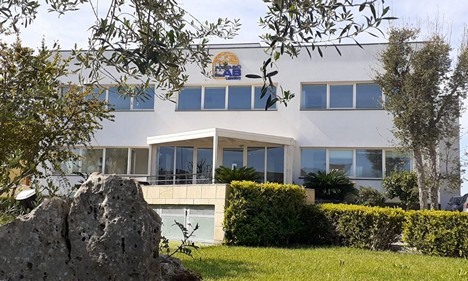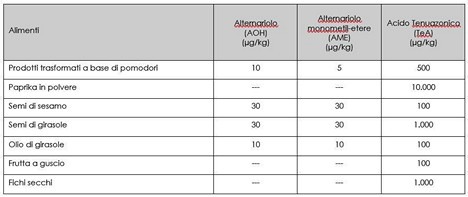Alternaria alternata is a common fungus in many crops; contamination affects wheat, sorghum, barley, tomato, apples, citrus, and several other fruits and vegetables.
Alternaria alternata produces a large number of phytotoxins, approximately 70, but few of these have been chemically characterized; the most common in food are alternariol, alternariol monomethyl ether, altenuene, tenthoxin, and tenuazonic acid.
The teratogenic and phenotoxic effects observed in humans and animals, for some of these toxins, aroused the interest of the European Food Safety Authority (EFSA), which published a scientific report to inform that chronic intake to Alternaria toxins in the European population is above the threshold of toxicological concern.

For this reason, the European Commission has recommended that a monitoring of Alternaria toxins, alternariol, alternariol monomethyl ether and tenuazonic acid in foods, particularly in processed tomato products, paprika powder, sesame seeds, sunflower seeds, sunflower oil, nuts, dried figs and cereal-based foods intended for infants and young children, should be carried out by food business operators.
High levels of Alternaria toxins in certain foods, based on EFSA data, are shown in the table below. The factors causing their high presence should also be further examined.
 Commission Recommendation (EU) 2022/553 of 5 April 2022
Commission Recommendation (EU) 2022/553 of 5 April 2022
It should be pointed out that the values in the table do not coincide with safety levels. In addition, there is an explicit request in the recommendations to perform representative sampling according to specific regulations and to use more sensitive analytical methods. For the determination of alternariol and alternariol monomethyl ether, the limit of quantification should not exceed 2 μg/kg in cereal-based foods for infants and young children and 4 μg/kg in other foods; while for the determination of tenuazonic acid, the limit of quantification should not exceed 20 μg/kg in all foods.

Agro.Biolab Laboratory, routinely analyzes Alternaria toxins and other toxins in agri-food products. Alternariol, alternariol monomethyl ether, tentoxin, and tenuazonic acid species can be analyzed simultaneously in a single liquid chromatography analysis with tandem mass detector (LC-MS/MS); the method developed by the laboratory, has a limit of quantification consistent with what is required by these recommendations.
For more information:
Agro.Biolab Laboratory s.r.l. 
S.P. 240 Km 13,800
70018 Rutigliano (Ba)
+39 080 4770762
sales@agrobiolabitalia.it
www.agrobiolabitalia.it
